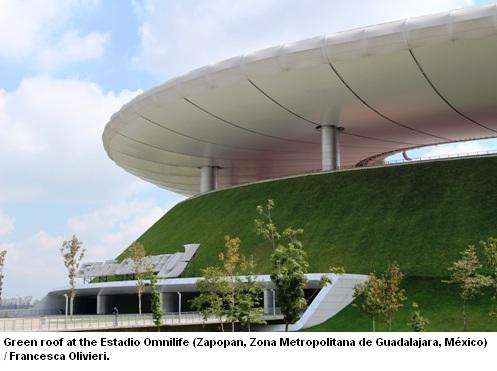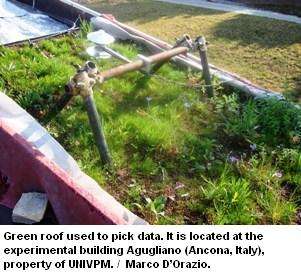Passive cooling for buildings with green roofs

Researchers from Universidad Politécnica de Madrid and Università Politecnica delle Marche have found that green roofs with high vegetation density are 60% more efficient than non-green roofs.
The main goal of this research conducted by the Universidad Politécnica de Madrid (UPM) and the Università Politecnica delle Marche (UNIVPM) was to show energy efficiency of green roofs. Researchers have developed a numerical model that was able to verify the effects on passive cooling of buildings caused by the density variation of vegetation of green roofs. With just an error between 5% and 7%, this model could be used to study the energy saving produced by these architectural elements.
In spite of the longtime use of green roofs, the growing interest in them has only increased for the last 20 years because they provide energy and environmental benefits for both buildings and cities. In fact, in recent years, numerous studies have covered these issues, although the complexity of the phenomena associated with the thermo-physical properties of green roofs hinders the development of an analysis model that can easily be included in the process of the building design.
Although green roof technology is considered mature and is a competitive solution, its use has not yet been extended in most countries due to lack of incentive regulation.
Numerous studies on energy efficiency of green roofs are based on the development of complex mathematical methods that involve the understanding of the vegetation and substrate characteristics, which generally go beyond the technical knowledge of most architects. Research based on observation of experimental data are usually restricted to short periods of analysis. In these cases, the results, although of great interest for the understanding of the roof characteristics, are difficult to extrapolate to other contexts or solutions.

Most studies consider the green roofs as a single unit made of plants and substrates, studied as if they had the maximum density of vegetation without considering that, unless it is a pre-vegetated green roof system, vegetation needs time to grow after installation and the roof might not have vegetation for a certain period of time.
This study is focused on three specific aspects: to assess the impact of vegetation density on energy efficiency of a roof located at a Mediterranean coastal climate; develop a simplified numeral model that can estimate thermal resistance values equivalent to plants and substrates, and finally, to verify the numerical model by using experimental data.
Results show that, when vegetation density is high, the incoming heat into the building through the roof is 60% lower than the incoming heat without vegetation. Researchers found that a roof with a high density vegetation works as a passive cooling system; in fact, the energy released from the building through the roof during the summer is 9% of the incoming energy during the same period.
Lastly, this study provides evidence that the numerical model has a suitable degree of accuracy since it reproduces the thermal behavior of the roof with an error rate between 5% and 7%. This would enable researchers to apply this model to study the energy saving produced by vegetation roofs in regions of Mediterranean coastal climate.
More information: "Experimental measurements and numerical model for the summer performance assessment of extensive green roofs in a Mediterranean coastal climate". Energy and Buildings 63: 1-14. DOI: 10.1016/j.enbuild.2013.30.054
Provided by Universidad Politécnica de Madrid



















